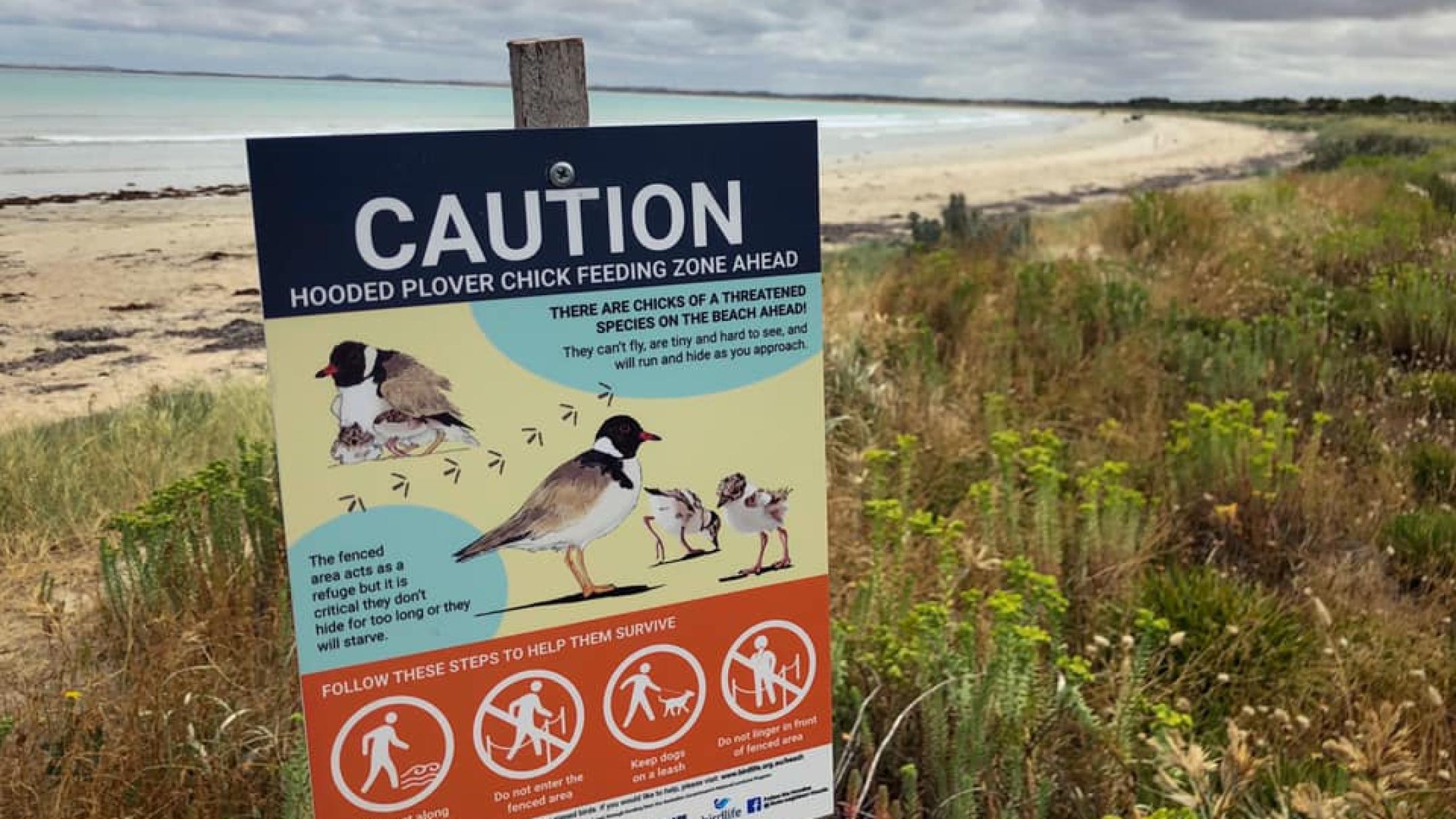For the first time in five years, volunteers have seen hooded plover chicks nesting on Robe’s iconic Long Beach survive to fledging.
Key points:
- Years of unsuccessful nesting for a pair of hooded plovers on Long Beach have ended
- The species is vulnerable in South Australia
- Beachgoers are asked to stay away from the birds and to keep their dogs on leads
Friends of Shorebirds South East volunteer Cath Bell said the years of disappointment were “not for lack of trying”, as the beach’s resident pair of adult “hoodies” laid at least 26 eggs since their last successful nesting in 2015.
Ms Bell said the pair’s eggs had all hatched over that time, “but we just were having some challenges getting the little chicks to survive to the point that they can fly”.
The beach saw tragedy again earlier this summer.
“So then they re-laid these [three], which are the ones that hatched just before Christmas.”
Ms Bell said the odds were against the chicks’ survival on the popular beach during the coastal town’s busy summer holiday season.
“It’s just really quite unexpected because we have had, well, it’s usually a peak visitation time to Robe, and Robe’s beaches anyway, but it’s been particularly busy with the whole COVID situation and a lot more domestic tourists it has felt like.
Hooded plovers are a vulnerable species in South Australia and conservation efforts at Robe include requiring dogs to be walked on leads along sections of Long Beach where the birds nest.
Ms Bell said to see three chicks fledge at once was “a nice reward for effort” for the parent plovers.
“Because they try and try and try,” she said.
“We’ve … worked out along the way that putting a fence around the nest is really helpful.”
Ms Bell said volunteers had seen more people walking their dogs on leads on the beach this summer.
“I think that’s helped significantly, along with that not-so-favourable beach weather during that peak time, people were still beaching but … maybe there were a few less people on the beach than there would have been otherwise.”
Robe District Council chief executive James Holyman said the council had worked with the Department of Environment and Water to protect the birds.
“We’ve encouraged the community to adhere to the rules in that area to have their dogs on leads and made sure there’s appropriate signage up so the community knows why the fencing is there and to comply with the rules.”
Mr Holyman said the council had worked hard over the past 18 months to protect the local environment.
“I know with the changing climate and the number of people we have through Robe, it makes it hard for some of the wildlife,” he said.
“But it’s very, very positive that we’ve seen this outcome this year.”
Flying the nest
Ms Bell said the volunteers did not know where the chicks would end up.
“That’s our hope, that they can … establish a breeding territory.”
The birds have been banded to help track their movements.
“That is also a hope that they’ll be sighted elsewhere on other beaches in the region, or wherever they end up, and that sort of information is reported back to us,” Ms Bell said.
“Then we’re able to understand a bit more about what happens to the chicks once they do fledge, because we don’t really know much about that.”




